RECENT
NOTICEBOARD
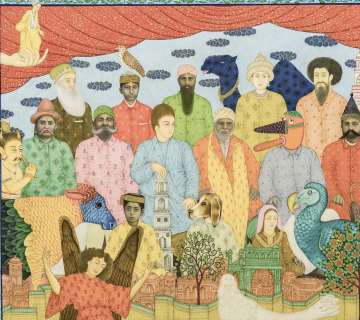
Whimsical Fantasies and Historical Realities
by Namrata Ghosh
Bringing new life to archival photographs through the vibrancy of traditional miniature painting, What the Camera Didn’t See encourages its viewers to revisit the static nature of images.
24 Jul 2024
_877589485_615.jpg)
Inky Trails: The Adventures of Abu Abraham
by Pinaki De
A recent exhibition paid tribute to the legendary cartoonist on his birth centenary, through works which mirror the complex politics of his era, but also speak to the frissons in contemporary times.
24 Jul 2024
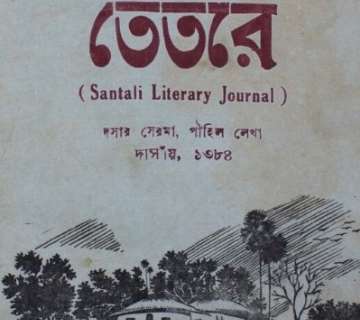
Santali Archives and Cultural Heritage: Echoes from the Past
by Rahi Soren
A growing digital collection of rare and endangered Santali literature from the 19th century provides valuable insights into the community's history and traditions.
24 Jul 2024

Revisiting the Legacy of Jagdish Swaminathan
by Radhika Sharma
The release of a new publication on Jagdish Swaminathan offers a fresh opportunity to raise questions around the artist and institution-builder's vision and contribution to Indian art.
24 Jul 2024

Galleries in India - Scaling Up
by Critical Collective
As the Indian art world increases its footprint, CC speaks to five gallerists to assess their changing priorities in recent years.
26 Jun 2024
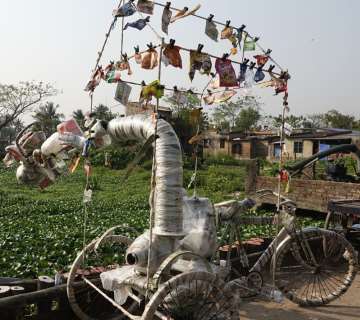
Chander Haat: Building Community through Environmental Art
by Mrinalini Vasudevan
Recipient of the inaugural Vivan Sundaram Grant for Installation Art, this artist collective uses site-specific projects to engage with local ecology, migration, living traditions and knowledge.
26 Jun 2024
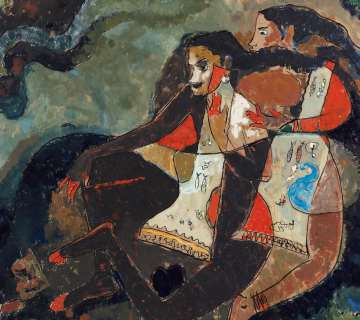
Centenary Tribute to Mohan Samant
by Umara Zainab and Vasudha Chatterjee
Revisiting the legacy of the modernist painter Mohan Samant, known for his unique and ambiguous painterly language and early experiments with mixed media.
26 Jun 2024

Thresholds of Becoming: 16 Artists Try To Step Across
by Sandhya Bordewekar
A recent exhibition at Ahmedabad's Conflictorium Museum delves into the various 'thresholds' that mark artistic practice, urban history and memories of home.
26 Jun 2024
ART, MEDIA AND LAW
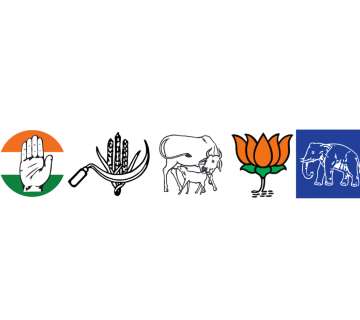
Electoral Symbols, EC and the Visual Terrain of Indian Elections
by Sruthi Muraleedharan
A study of the shifting political, ideological and aesthetic ideas and agendas reflected in the symbols allotted to prominent Indian political parties by the Election Commission since 1951.
26 Jun 2024
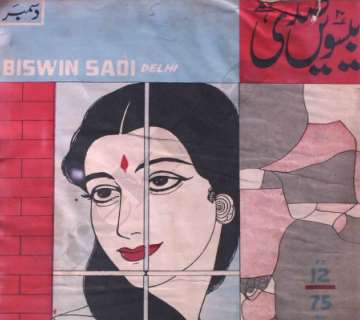
Biswin Sadi: Politics and Popular Readership in Urdu Print Culture
by Umara Zainab
Focusing on the Delhi-based magazine, Biswin Sadi, the writer examines the role of Urdu political commentary and cartoons in critiquing state structures.
23 May 2024

To See or Not to See…That is the Question
by Ganesh V. Shivaswamy
On the origins of the concept of “obscenity” in art, the debates around it and its evolution as a societal and legal construct.
24 Apr 2024
_Title_331517884_5.jpg)
Art in the Indian Constitution
by Umara Zainab
The illustrations in the Indian Constitution must be recovered and contextualized within the guiding principles that went into the nationalist ethos and history-writing in the 1950s.
26 Feb 2024

The Sounds of Radio in India
by Vebhuti Duggal
This article looks at how radio policies affected the creation of sound standards on All India Radio and produced and maintained a citizen-listener over the decades.
23 Jan 2024

Soap Advertising: Decently Negotiating Law, Identity and Nation
by Sreyashi Mukherjee
On the navigation of notions of decency and obscenity through female-centred soap commercials from the 1980s and 1990s.
22 Dec 2023
_574781766_5.jpg)
Queer and Here: Sexuality in Hindi Cinema
by Madhavi Menon
A look at how we understand queerness in India, and Hindi films which do or do not count as “queer-friendly”.
27 Nov 2023

The Many Memories of Bahadur Shah Zafar and Hindustan
by Umara Zainab
The subcontinent’s last Mughal emperor holds a mirror to older pasts of a syncretic 'Hindustan' that were later usurped by a more tightly controlled narrative of 'British India'.
26 Oct 2023
ART AND DESIGN
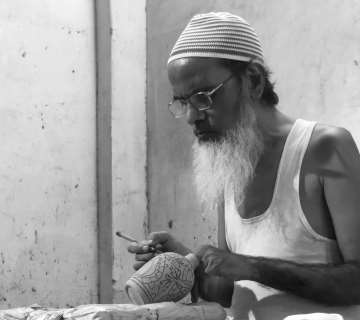
The Multifaceted Design Identity of Khurja Pottery
by Dhruv Dalvi and Sharfaa Hayath
A centuries-old centre of traditional pottery, which works with Mughal designs and patterns, struggles to retain its heritage identity under the pressures of modern techniques and mass market demands.
24 Jul 2024
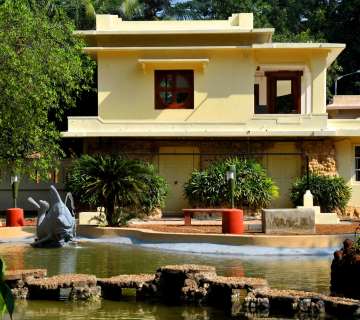
Shadows of Japan in the Built Heritage of Tagore’s Santiniketan
by Nilanjan Bandyopadhyay
A reflection on the design of Tagore’s Santiniketan ashram that found inspiration from his encounters with Japan’s artists, architecture and way of life.
26 Jun 2024
_1417988718_19.jpg)
In Conversation with Gunjan Gupta
by Namrata Ghosh and Radhika Sharma
On the designer’s use of Indian craft traditions that inspire her works,which aims to blur the boundaries between art and design.
23 May 2024

Realizing a Dream: The Enduring Legacy of Bhanu Athaiya
by Gayatri Sinha
On Bhanu Athaiya’s transition from art to costume design, and how, over five decades, she determined a nation’s sense of style.
23 Apr 2024
_1295000650_5.jpg)
Domestic Architecture and Mercantile Identity in Colonial Chettiyar Country
by Meena Azhagappan
On the architecture of the grand residences built by the Nattukottai Chettiyars in the 19th and 20th centuries.
25 Mar 2024
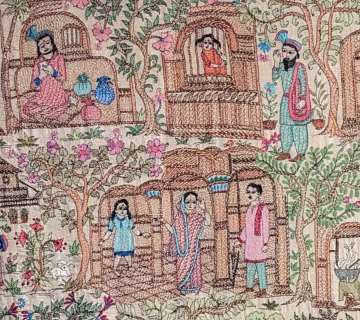
More than Meets the Eye: Reading Between the Threads
by Damini Kulkarni
Currently on display at Mumbai’s National Gallery of Modern Art, Sutr Santati demonstrates how threads of gentle subversion can be teased into and out of the fabric of dominant narratives.
23 Jan 2024
Changing Images of an Ideal World in Adarsh Balak
by Rajni Chandiwal
This essay traces the journey of the Adarsh Balak image and the interpretation and relevance it acquired in different eras of pre- and post-independent India.
22 Dec 2023

Interview with Vikram Goyal
by Critical Collective
Known for his creative engagement with material, the designer talks about the inspiration behind his designs, which often transition from being furniture to becoming unique sculptural pieces.
22 Dec 2023
art history

The Evolution of Awadhi Painting in the 18th Century
by Ayush Mishra

An Early Guler Painting
by Jagdish Mittal
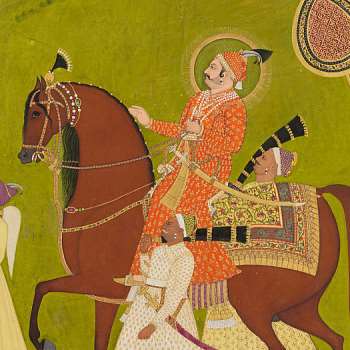
The Kachhwaha School of Rajput Painting (Amber and Jaipur)
by Hermann Goetz
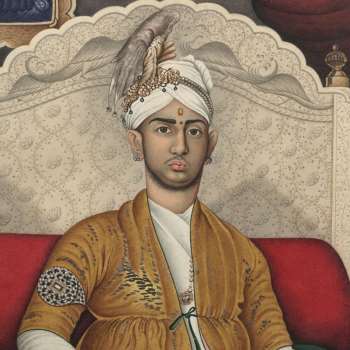
Carnatic Music and Colonialism
by Lakshmi Subramanian
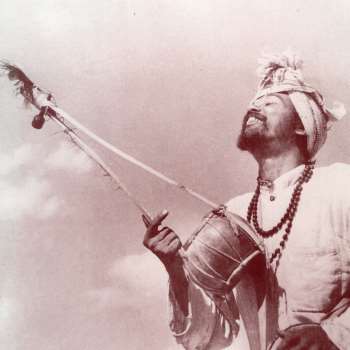
Worlds within Worlds: Journeys with the Bauls of Bengal
by Moushumi Bhowmik

Promotion of Music by the Turko-Afghan Rulers of India
by Dharma Bhanu
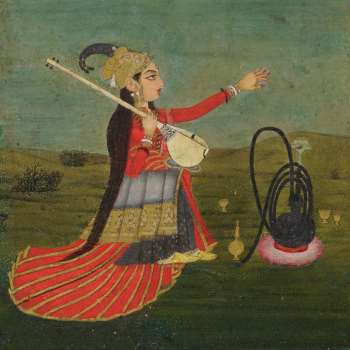
Music in Muslim India
by S.N. Haidar Rizvi
CINEMA/OTT
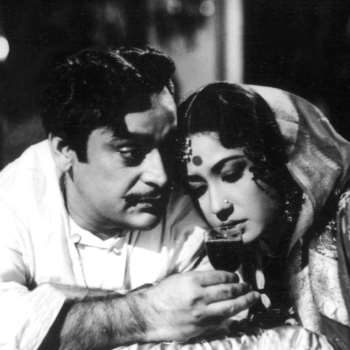
Emerging from the Shadows: Remembering Abrar Alvi
by Umara Zainab
Abrar Alvi’s contributions to Indian cinema brought dynamism to dialogue and scriptwriting to appeal to diverse audiences and capture everyday lives.

Kalki 2898 AD and Science Fiction in Indian Cinema
by Shankar Tripathi
Nag Ashwin’s big-budget spectacle represents a uniquely Indian form of storytelling that brings together science fiction and fantasy.

The Importance of Being Naseeruddin Shah
by Shaikh Ayaz
A look back at the career of the wizened thespian and original poster boy of the Indian parallel cinema movement, who still speaks his mind as a rare, secular Muslim artist.

Down to Earth: Ecological Documentaries at MIFF 2024
by Damini Kulkarni
Two films commissioned by Roundglass Sustain capture the everyday-ness of human-animal encounters and the complexities of Indian ecosystems.

The Sport of Elections on the Indian Screen
by Uttaran Das Gupta
Indian films and streaming services find polls to be a compelling subject because these narratives can be framed like a David vs. Goliath contest.
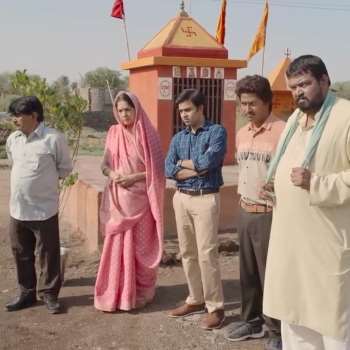
Panchayat 3: An-esthetics of Purity and Coloured Perceptions
by Sachin
On the limited exploration of contemporary politics, feminism and caste dynamics in Uttar Pradesh’s rural social fabric.
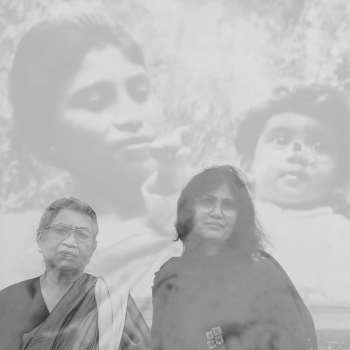
Joymoti Never Left: Mehdi Jahan on the Cinema of Jyotiprasad Agarwala
by Mrinalini Vasudevan and Namrata Ghosh
On Agarwala’s films and legacy and the continuing relevance of the director’s vision for contemporary politics in the state.
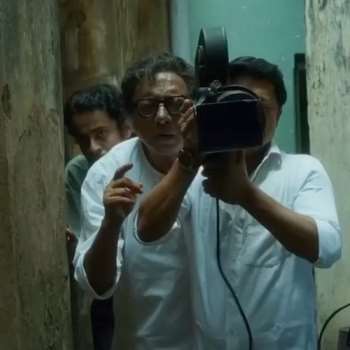
Chaalchitra Ekhon: A Kaleidoscope of Calcutta Memories
by Mrinalini Vasudevan
Anjan Dutt's homage to his mentor, Mrinal Sen, who left a significant impact on his cinematic journey and his political views.
Lens Based Practices
_1119239039_2133.jpg)
The Changing Face of Photojournalism in India
by Critical Collective
Remembering the legacy of Danish Siddiqui, this discussion addresses the factors that shape crisis coverage within photojournalism.

The Popular Culture of Photographing Death in Varanasi
by Shan Bhattacharya
A review of Gaurav Madan’s film Barah x Barah, which explores death at the Manikarnika Ghat.

Ram Rahman: Shifting Perspectives
by Saraswathy K. Bhattathiri
A study of photographer, curator and activist Ram Rahman's large body of work.
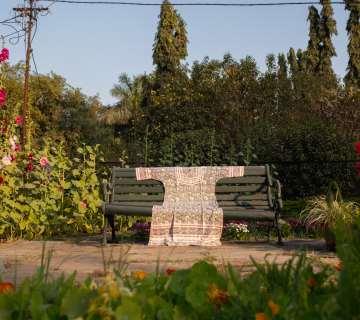
Conversation with Divya Cowasji
by Gayatri Sinha
Photographer and documentary filmmaker Divya Cowasji opens up about her Parsi antecedents and the subjects that inspire her.
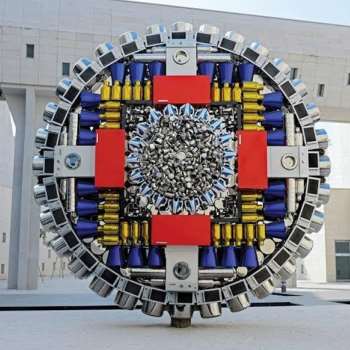
Heritage Urbanity: A Region and Its Identity
by Akash Bharadwaj
On how the creation of a new identity for Bihar is rooted in the assimilation of its cultural heritage and plans for urban development.

The Evening Redness in the East
by Adreeta Chakraborty
A close study of Arko Datto’s The Shunya Raja Monographies, which captures the slow, ongoing climate devastation in the Sundarbans.

Review: Les Rencontres de la Photographie, Arles, 2023
by Virginia Whiles
This year’s festival focuses on themes of loss, exile and conflict within families to create experimental works of political relevance.
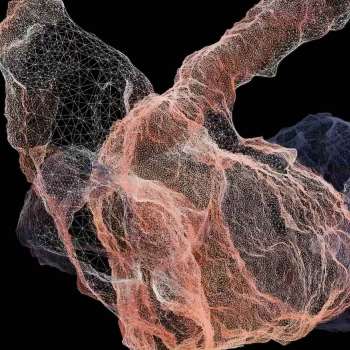
Interview with Vishal Kumaraswamy
by Critical Collective
Focused on subaltern experiences and identity, the artist speaks about the use of experimental technology in the making of his art. (2023)
CC ARCHIVES
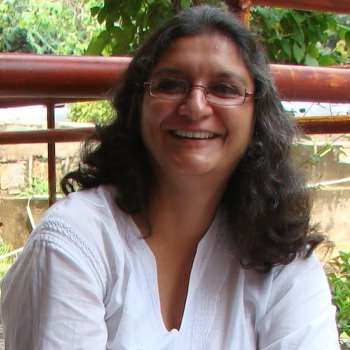
In Remembrance: Kavita Singh (1964-2023)
by Saloni Mathur, Jyotindra Jain, Parul Dave Mukherji and Deepti Mulgand
Colleagues, collaborators and students remember Kavita Singh's vitality and intellectual engagement iin India’s cultural sphere.
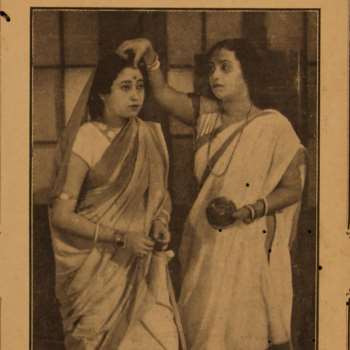
Theatre Mementos: Reading Bengali Theatre Playbills from the 1940s
by Amreeta Das
These playbills provided insights on the socio-political world of the times and the lives of lesser-known stage practitioners. (2023)
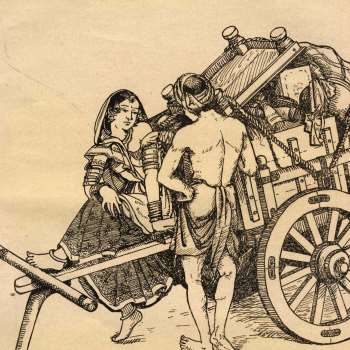
Tracing Ravishankar Raval’s Art Pedagogy in the Gujarati Periodical Kumar
by Vasvi Oza
Ravishankar Raval advocated for new approaches to art education in colonial India through the magazine, Kumar. (2023)
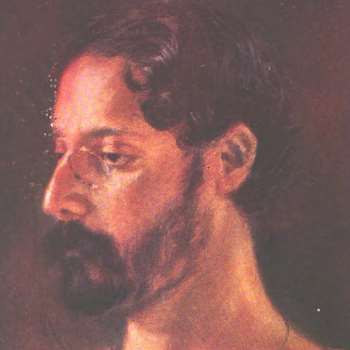
The Santiniketan School of Art
by Benode Behari Mukherjee
The article traces the significance of the Kala Bhavan in the evolution of modern art in Bengal while exploring the impact of Abanindranath Tagore and Nandalal Bose. (1935)
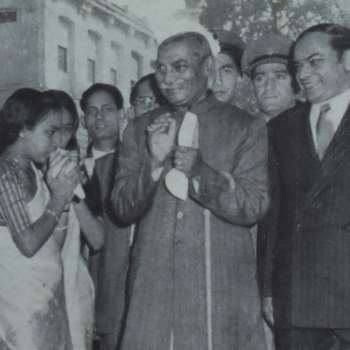
Past and Future Lives of an Institution:The Hindu/Presidency College Archive
by Sandipan Mitra
On the processes of maintaining, curating and preserving institutional histories. (2023)
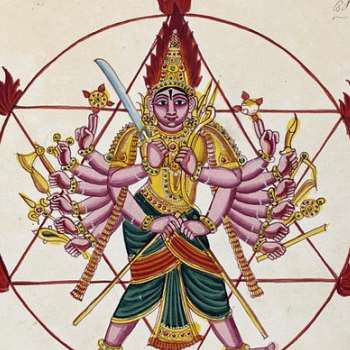
Indian Art and Ideology
by Asit Kumar Haldar
The article explores the close relationship between the study of Indian philosophy, the use of symbolism and the development of Indian art. (1951)
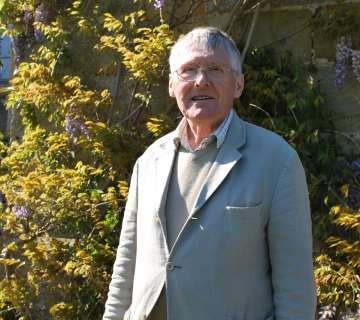
A Great Friend of India: Robert Skelton (1929-2022)
by Gulammohammed Sheikh
From their first meeting at the V&A in the 1960s, Gulam Sheikh reminisces about the legendary museum curator and scholar of Indian art, with whom he shared a six-decade-long friendship.
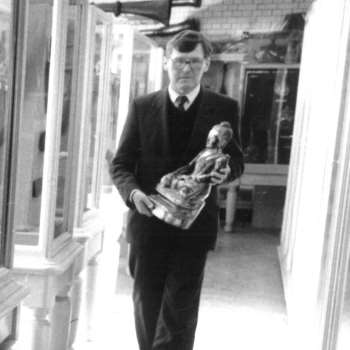
Correspondence between Gulammohammed Sheikh and Robert Skelton (1966-1994)
In the rich exchange of letters between Sheikh and Skelton, we are given insights into Skelton’s travels and research in Indian painting.
MUSEUMS
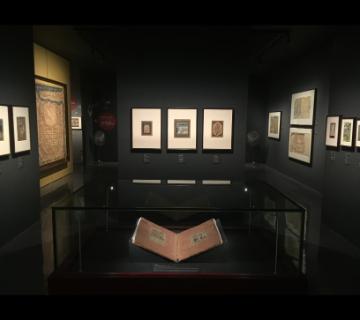
Museum Making in India Today: Conversation with Eka Resources
by Namrata Ghosh
New and upcoming museums in the country reveal how they incorporate Indian design practices and build on collaborations between local and foreign firms.
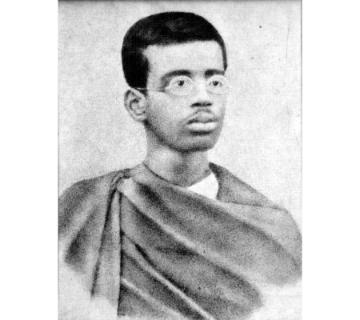
Kolkata Police Museum
by Namrata Ghosh
Tracing police history from the colonial to the early 2000s, the museum provides a glimpse into the formation, evolution and functioning of the city police while raising questions about the politics of representing institutional histories.
_1403728434_558.jpg)
Interrogating India’s First Museum Biennale at the Bihar Museum
by Namrata Ghosh
The article raises important questions about the use of the word ‘biennale’ while examining the impressive museum the event is located in.

Representing a History of Violence: The Partition Museum in Delhi
by Umara Zainab
The recently inaugurated museum highlights Delhi’s experience of violence and displacement in the wake of the 1947 Partition.
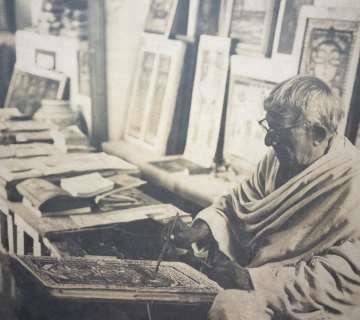
A House for Mr Roy
by Mrinalini Vasudevan
DAG’s recent acquisition of and plans for the Jamini Roy House in Kolkata gives hope for a new model of museum-making in India.

Praying at the Museum: The Ancestral Home of Swami Vivekananda
by Namrata Ghosh
On the eve of Swami Vivekanand’s death anniversary, the author visits his house-museum, which also serves as a place for worship.

The South Asia Gallery at the Manchester Museum
by Virginia Whiles
This gallery becomes the first permanent space in the UK to celebrate subcontinental art history and the culture of the South Asian diaspora.
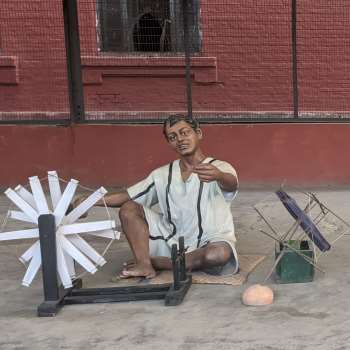
The Alipore Museum: Caught in a Grey Zone
by Mrinalini Vasudevan and Namrata Ghosh
The conversion of Kolkata's Alipore Jail into a museum raises important questions about the repurposing of heritage sites in public spaces.
Curators and Exhibitions

Nation as Exhibit: The Long Shadow of T.N. Mukharji
by Gayatri Sinha
Remembering T N Mukharji, the first Indian curator at an art institution, known for his internationally mounted exhibitions in the 1880s.
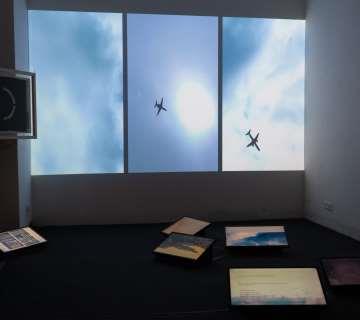
Artists and the Weather Station
by Namrata Ghosh and Radhika Sharma
28° North and Parallel Weathers brings together art, science and digital intervention in tracking weather changes in regions along latitude 28° North.
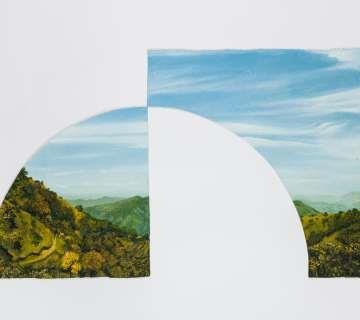
In Search of New Horizons: Muhanned Cader's Island in the Sky
by Mrinalini Vasudevan
The landscapes captured in the Sri Lankan artist's first solo exhibition in India become metaphors for themes of home, belonging, exile and multicultural identities.
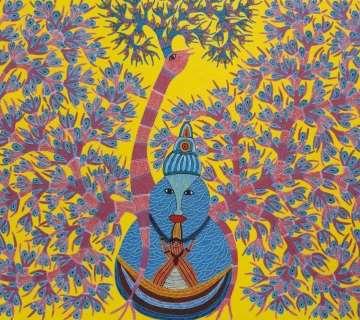
Revisiting Another Master: Ram Singh Urveti
by Umara Zainab
The myths and legends of the Gond community have found new life in the painterly canvas of Urveti over the last three decades.
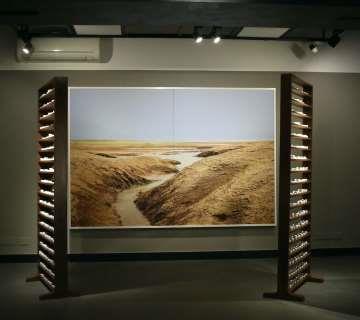
When Artists Reimagined ‘The Waste Land’
by Radhika Sharma
Art Heritage’s exhibition revisits T. S. Eliot’s classic, Reimagining The Waste Land, through the works of five contemporary Indian artists.
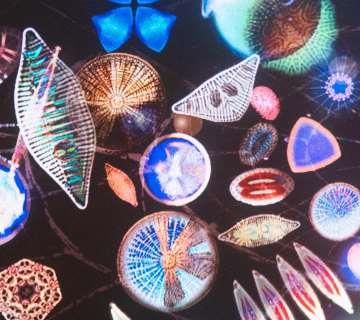
Crisis in the Critical Zone
by Namrata Ghosh
This travelling exhibition seeks to draw attention to the ever-growing challenge of climate change by focusing on the fragile environment of the critical zone that sustains all life on Earth.

Form and Ritual: Arti Kadam’s Sculptural Exploration of Everyday Grace
by Deeksha Nath
The artist’s inaugural solo exhibition, House of Objects, reveals her ability to transformutilitarian objects and tasks into meditative, ritualistic tools and practices.
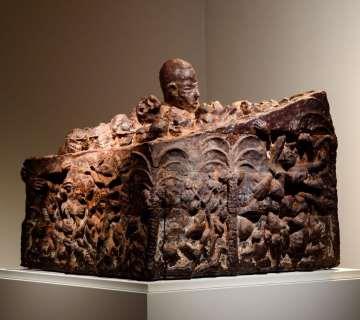
Review of Someone is getting rich
by Virginia Whiles
The works of 16 contemporary artists on display at Wereldmuseum Amsterdam reveal how the afterlife of the colonial project remains silently embedded in the financial sector today.
artists
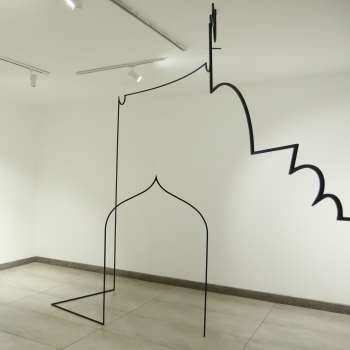
Cracks in the Wall
by Adwait Singh
Ayesha Singh explores intercultural exchange in the pre-globalization world, while drawing attention to the vulnerability and transience of built architecture.
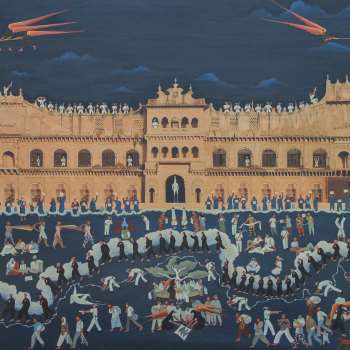
Baaraan Ijlal: Hostile Witness
by Gayatri Sinha
Baaraan Ijlal studies her chosen site as a witness to history and situates it within the context of demolition and repurposing that has gripped Indian cities and their built heritage.
_1480124682_2123.jpg)
Trough Traces: Arunkumars’ Arbitration on the Transforming Ecosophy of Food
by Anshuman Dasgupta
TRACT explores the interactions between food and ecology through various mediums and motifs.
_1930963814_2111.jpg)
Caryatid - A View Point
by Chaitanya Sambrani
Shakuntala's caryatids are supporters of the structure of society, which engage in a series of actions and gestures related to ideas of carrying, connecting and balancing.

The Last Sanctuary: Vasudevan Akkitham
by Gayatri Sinha
“Vasudevan Akkitham sets up a dialogic interlude, one that traverses personal history and the legacy of art to reflect on the present.”

Dilip Chobisa: Visual Illusion, Visual Allusion: Private Dairy, Public Participation
by Deeksha Nath
On Dilip Chobisa's imaginative experiments with the notions of space and architecture.
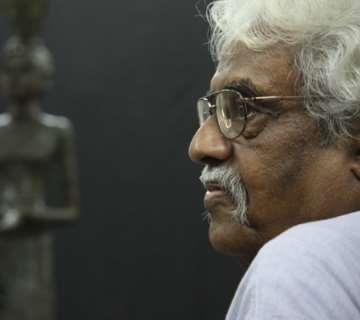
A. Ramachandran (1935-2024): The End of an Era
by Gayatri Sinha and Umara Zainab
A look back at the evolution of the modernist artist’s career, and the legacy of his drawings, paintings and sculptures, widely appreciated for their explorations of Indian mythology and nature.
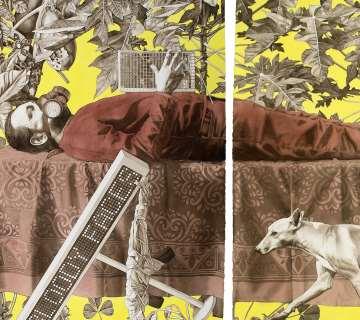
An Elegy to the Universal Soldier in T.V. Santhosh’s History Lab
by Mrinalini Vasudevan
Santhosh’s latest exhibition engages with the history and evolution of war and violence, and the passive ways in which we have come to consume both in an increasingly mediatized world.
Artists Groups and Collectives
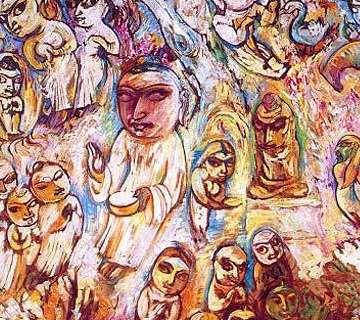
Drifting Threads: Cholamandal Artists’ Village over fifty years
by Ashrafi S Bhagat
Ashrafi Bhagat traces the past, present and future of the Cholamandal Artists' Village in Chennai.
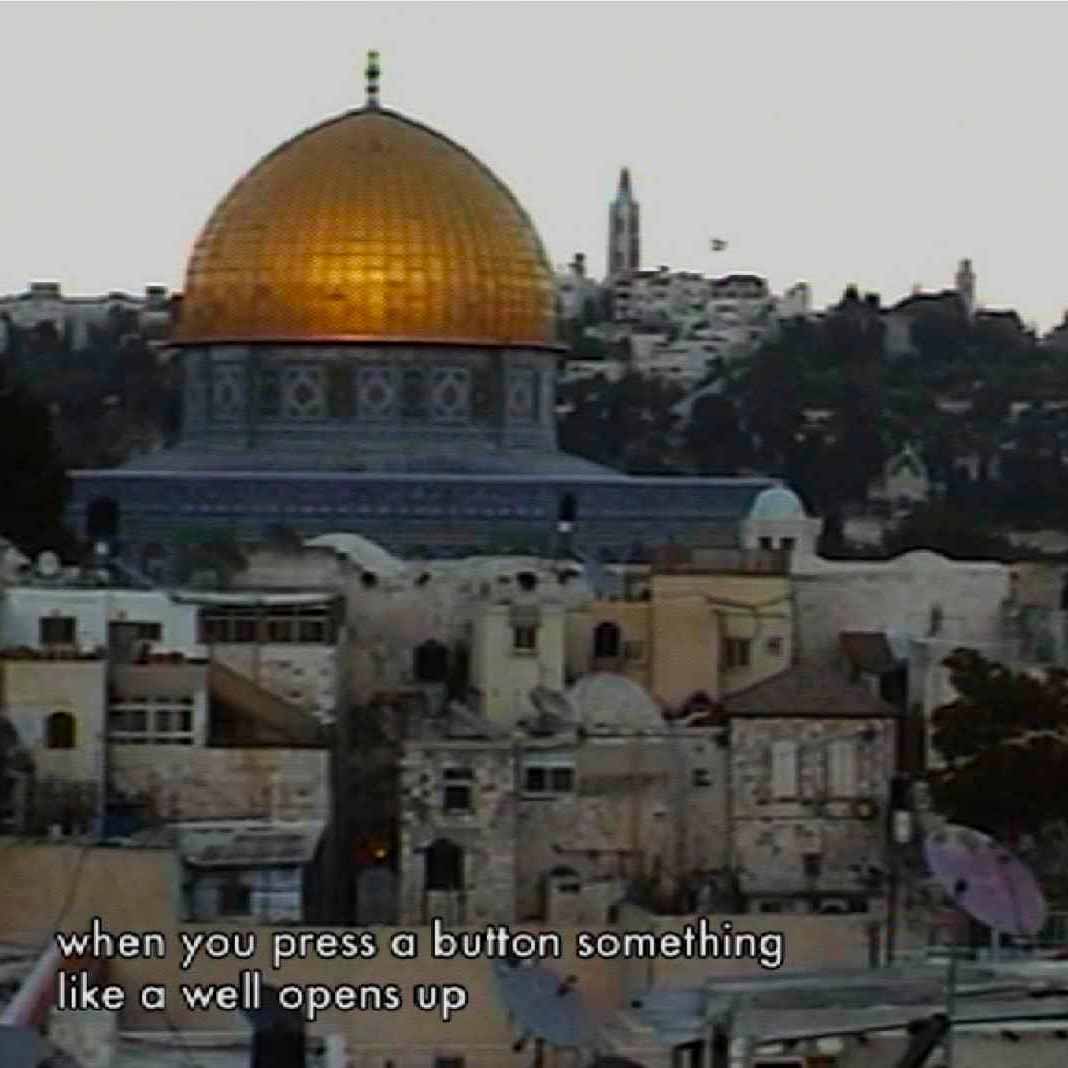
How to Feel a Leak?
by CAMP
CAMP elaborates on their work, THE RADIA TAP(E)S as part of The Ungovernables, New Museum, New York Triennial (2012).

CONA: Points of Reflection
by Hemali Bhuta
Hemali Bhuta on the founding of CONA as a pedagogical structure for artists.

New Group: In conversation with Amitava Das and Mona Rai at New Delhi, April 23, 2014
Amitava Das and Mona talk about the formation of the New Group in 1974.
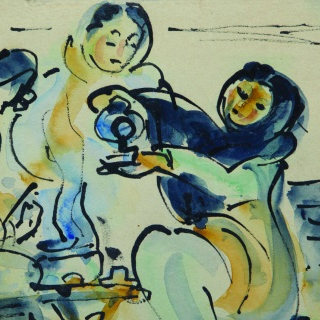
The Calcutta Group - Its Aims and Achievements
by Prodosh Das Gupta
Prodosh Das Gupta highlights the premise of founding the Calcutta Group in 1940.
Indian Society of Oriental Art
by James H. Cousins
Artists Conversations

Architectures of Momentum: In Conversation with Rameshwar Broota
by Critical Collective
The artist’s oeuvre has been a long-standing testament to how he addresses the passage of time in defined forms and abstractions.
_2086054073_537.jpg)
On 1Shanthiroad: In Conversation with Suresh Jayaram
by Mallika Visvanathan
As 1Shanthiroad Studio and Gallery completes 20 years, Suresh Jayaram speaks about the nature of the space and its future in a post-pandemic world.
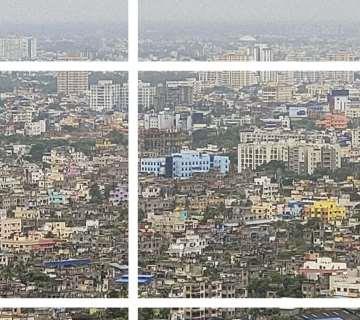
Conversation with Gigi Scaria
by Sohorpem Kazingmei
The artist highlights the centrality of city landscapes in his work, while speaking of his experiments with printmaking as part of his artistic process.
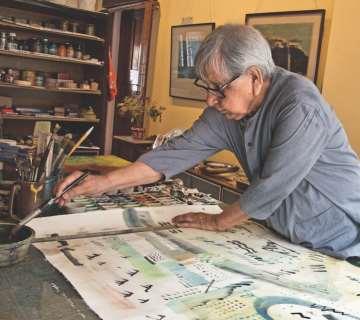
On Nature and Abstraction: An Interview with Ganesh Haloi
by Namrata Ghosh
The artist talks about how his early life and experiences greatly influenced his practice.

how many songs from a single note?
by Shaunak Mahbubani
Shaunak Mahbubani interviews artist, Rah Naqvi about her recently closed exhibition, how many songs from a single note?

Today is Better than Yesterday: In Conversation with Surekha
by Mallika Visvanathan
Surekha speaks about her recent works displayed at 1Shanthiroad, Bengaluru, made in response to the feelings of stagnation and loss which characterized the first waves of Covid-19.
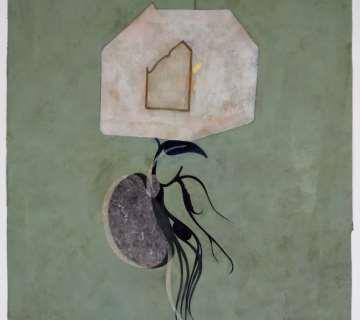
Pieces of Home: In conversation with Tanmoy Samanta
The artist discusses his latest series of works created in the midst of the pandemic, which reconsider the ideas of home and earthly existence, using pigment, rice paper and shape-shifting collages.

Walking with the Waves
by Gayatri Sinha
Atul Dodiya speaks to Gayatri Sinha about his watercolours on display at the Kiran Nadar Museum of Art, which reveal his responses to the pandemic and his views on asceticism, nature and art history.
ON GENDER
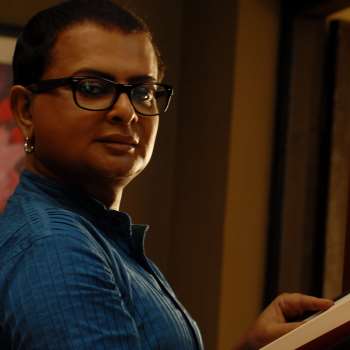
Rituparno Ghosh and the Queer Folks of Bengal
by Kaustav Bakshi
A look at how the late Bengali filmmaker emerged as a queer icon by making public a precarious, marginal, dispossessed life.
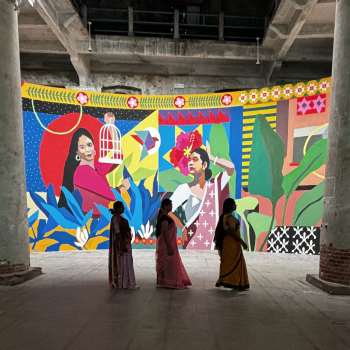
Conversation with the Aravani Art Project
by Critical Collective
On the use of collaborative public art projects, especially murals, to empower the trans community across small and big cities in India.
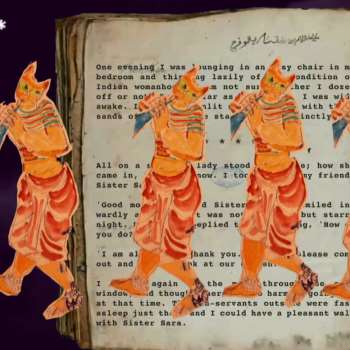
Afrah Shafiq and the Art of Play
by Mrinalini Vasudevan
Shafiq, who works at the intersections of technology and art, opens up about the women who have inspired and found their way into her stories.
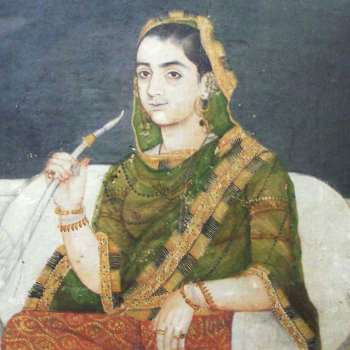
Minto and the Begums of Oudh
by Shilendra K. Singh
On the role of Bahu Begum, the widow of Nawab Shuja-ud-Daula, and Bhabi Begum, the widow of Nawab Wazir Asaf-ud-Daula, in the Anglo-Oudh political relationship of the 19th century.
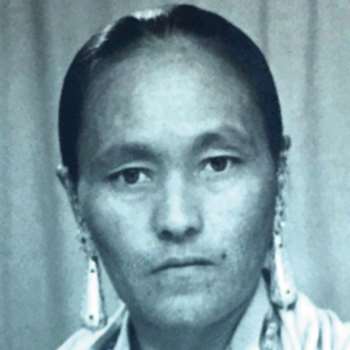
Reading Silenced Identities Through Visual Archives: Indian Travelling Ayahs in Service of the British Empire
by Arunima Datta
On the ayahs (Indian maidservants) employed by elite Indian and European families.

‘Lovely’ Housewives and Glamorous 'Modern' Girls: Cosmetics Advertising in India, 1920s-1950s
by Mobeen Hussain
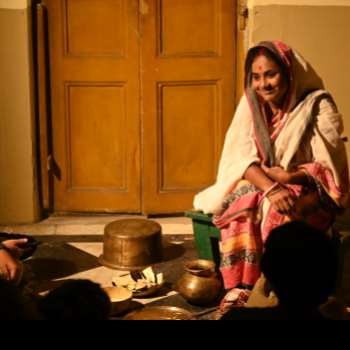
The House as Stage: Keyabat Meye and the Lives of Bengali Women
by Namrata Ghosh
The queer-feminist collective, Samuho explores the changing position of Bengali women in 19th-century society.
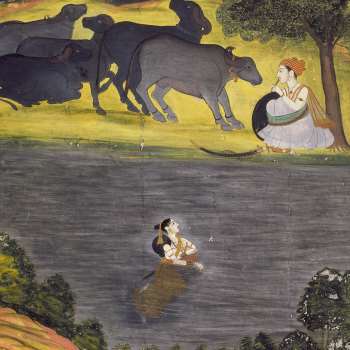
Women’s Voices in Shah Abdul Latif’s Risalo
by Lara Scaiola
Sindhi and Punjabi folktales with beguiling heroines are transformed into spiritual allegories in the medieval Sufi poetry of Shah Latif.
AESTHETICS THEORY
_571169570_1599.jpg)
Anandavardhana's Treatment of Aprastutaprasamsa
by P. K. Narayana Pillai
The essay discusses the degree of novelty in Anandavardhana’s theory of dhvani, and the rhetorician’s opinions regarding the contributions of his successors towards the theorization of dhvani. (1957)
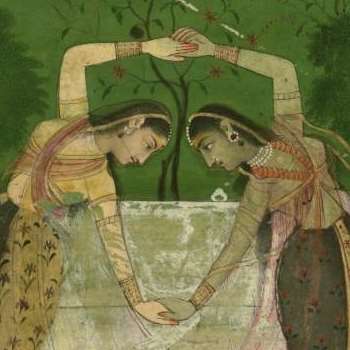
A Critical Survey of the Ancient Indian Theatre Accordance with the Bharata Natyasastha and its Commentators
by Subba Rao
Construction of ancient Indian theatre, as propounded in Bharata's Natyashastra is interpreted in an objective manner by comparing the theoretical with the practical aspects. (1953)
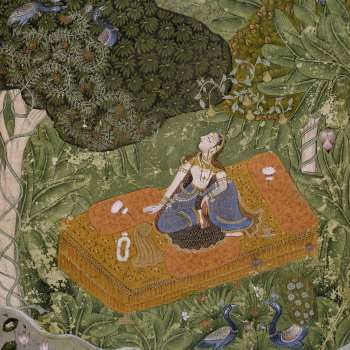
An Outline of Indian Aesthetics
by Nagendra
On the various speculations pertaining to the nature of Beauty in the Indian context and the contribution of Indian poetics and philosophy in its formulation. (1934)
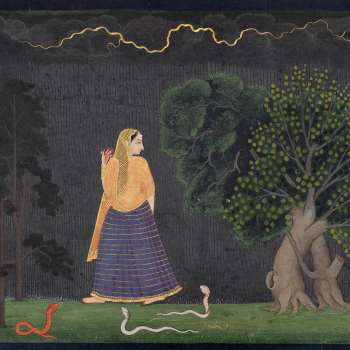
The Dynamism of the Indian Concept of Rasa
by K S Ramaswamy Shastri
On the concept and origin of Rasa in Indian aesthetics and the development of its elements. (1935)
_1967359846_1423.jpg)
Some Modern Critics and Ancient Texts on the Aesthetic Value of Hindu Images
by N.V. Mallavya
On the aesthetic and iconographical aspects of ancient Indian sculpture as outlined in the Agamas and Shastras. (1942)
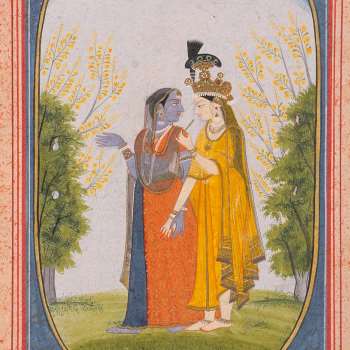
Anandavardhana’s Treatment of Pratibha in Relation to Dhvani
by K. Krishnamoorthy
On the concept of Pratibha or creative imagination brought about by the agency of Dhvani. (1950)
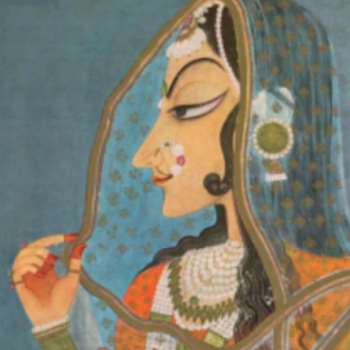
Peculiarities in the Alamkara-Section of the Agni-Purana
by Suresh Mohan Bhattacharya
On the unique modes of treatment accorded to Alamkara and its constituent elements in the Agni Purana. (1960)
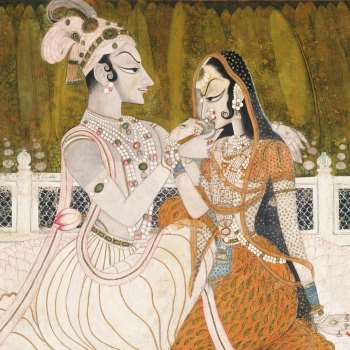
Studies in Dhvanyaloka, the Adivakya in Dhvanyaloka
by V.A. Ramaswami Sastri
On the importance of dhvani in communicating the essence of emotion inherent in poetry and drama. (1955)
CURATING SOUTH ASIA
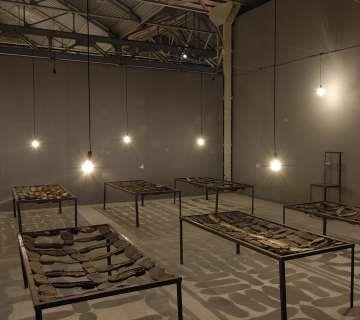
Memory Fields in the Art of the Global South: A Review
by Gayatri Sinha
Andreas Huyssen's deeply perceptive reading of key artists creates a transnational view of the recollection of trauma and its invocation in contemporary art.
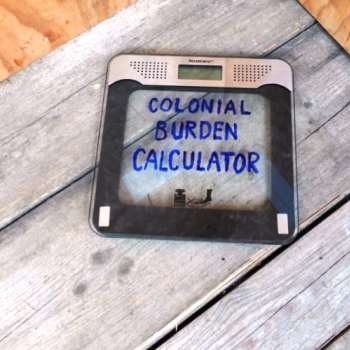
Parvez's performative gestures:The subversion of the capitalist art economy
by Deeksha Nath
The author writes on performance and lens based artist Parvez’s seven month long project in Switzerland questioning the presumptions around audience interaction and the sites of art presentation.
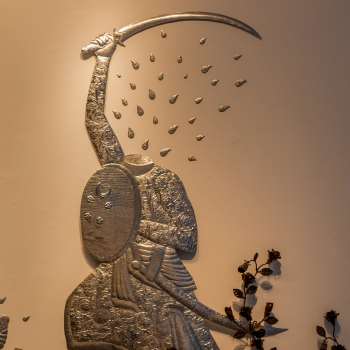
Restless Creations: Adeela Suleman's Art for Social Change
by Virginia Whiles
Virginia Whiles speaks with sculptor Adeela Suleman on her use of found objects and dark humour in her work, as a way of exploring social and ecological violence, tragedy and censorship in Pakistan. (2021)
_2041253090_1449.jpg)
Positionings
by Salima Hashmi
With Bani Abidi's nomination for the Böttcherstraße prize, Salima Hashmi writes on a generation of Pakistani women artists' work "as a site for mutinous content and personal empowerment.” (2020)
_395565903_1451.jpg)
TANTRA: Enlightenment to Revolution
by Virginia Whiles
The author reviews the ongoing exhibition at the British Museum through a ‘socially distanced’ critique, following online talks and exchanges with colleagues. (2020)
_2007622616_1315.jpg)
Contesting and coalescing voices from Dhaka Art Summit
by Mustafa Zaman
In its 5th edition, DAS invited the voices of different communities, giving them a chance to articulate in their own terms, the legacies of colonial/postcolonial modernity. (2020)

Lahore Biennale: ‘between the sun and the moon’
by Virginia Whiles
The second Lahore Biennale stages a polyphony of artistic voices weighing in on the shared cultural and political history of South Asia and the Middle East. (2020)
_594353235_1199 11_1051204092_1199.jpg)
Bani Abidi: Funland
Curators Hoor Al Qasimi and Natasha Ginwala on a major survery of Bani Abidi's works exhibited at Sharjah Art Foundation. (2019)
CC Books
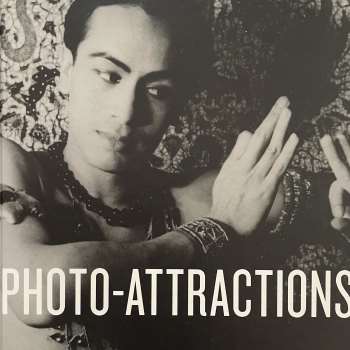
Book Review: Photo-Attractions
by Malavika Karlekar
Ajay J. Sinha’s latest book unearths the performance-based collaboration between Indian dancer Ram Gopal and American photographer, Carl Van Vechten.
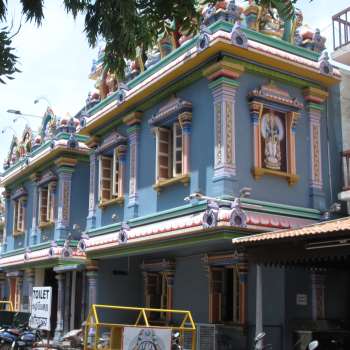
Book Review: History of Urban Form of India
by Sandhya Bordewekar
Pratyush Shankar's book looks at indigenous models of urban planning that emerged in response to local geographic, historical and socio-economic orientations.
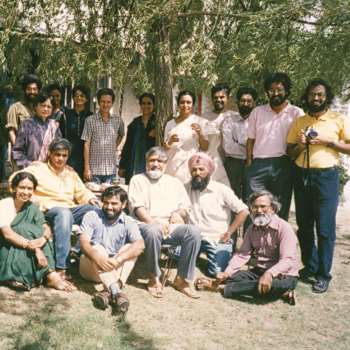
Doing History at a Slant: Remembering the Kasauli Art Centre
by Arushi Vats
A review of Belinder Dhanoa’s Kasauli Art Centre (1976-1991)

Book Review: Postnational Perceptions in Contemporary Art Practice
by Kamayani Sharma
Bindu Bhadana examines the art of Chitra Ganesh, Tejal Shah and Nikhil Chopra.

Review of The Planetary King: Humayun Padshah
by Umara Zainab
Ebba Koch's new work provides a holistic picture of the oft-maligned Mughal emperor, Humayun, through a study of his interest, beliefs, ideology and cultural contributions.

Pushpamala N. and "the Artistic Ways of Viewing the Sacred"
by Annapurna Garimella
The book is a collection of articles reflecting on Pushpamala N.’s reimagination of popular images within the framework of nationalism and motherhood.

The Dr. Bhau Daji Lad Museum: A Palimpsest of the Past and Present
by Amrita Gupta Singh
Mumbai: A City Through Objects - 101 Stories from the Dr. Bhau Daji Lad Museum allows for an exploration of the city of Bombay/Mumbai through the lives of several objects in the musuem.
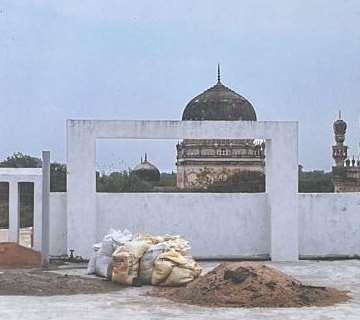
Golconda-Hyderabad : Imaging History
by Gayatri Sinha
In a project spread over several years, Dr Hans Winterberg and Thomas Luttge document the decaying historical monuments of Hyderabad.
CC REFERENCE
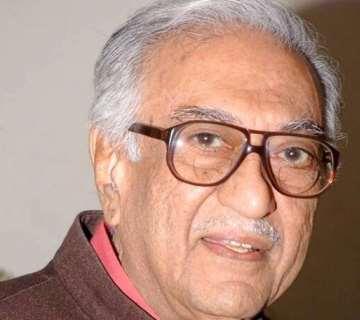
Ameen Sayani (1932-2024): The South Asian Radio Star
by Vebhuti Duggal
The essay looks back at Ameen Sayani's stardom in light of his passing, and about the legacies of his flagship programme, Binaca Geetmala.
_150448270_591.jpg)
Review of Common Ground: Where Our Truths Meet
by Namrata Ghosh
The second edition of the Indian Ceramics Triennale brings together artists from 12 countries that engage with landscape, identity, history and culture.
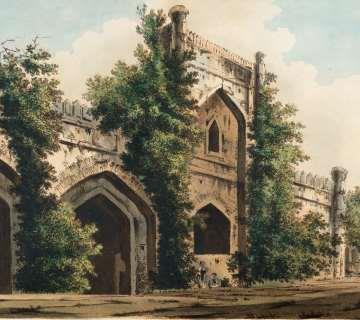
Viewing India through the Lens of William Hodges
by Vasudha Chatterjee
On the politics of representation in colonial India and the picturesque oriental depictions of the subcontinent in the works of Hodges.
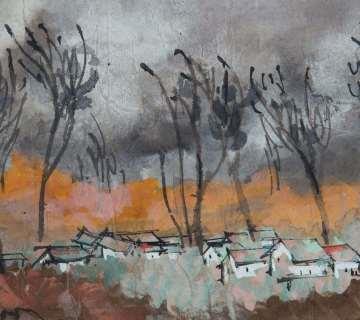
The Forgotten Saga of Gopal Ghose
by Vasudha Chatterjee
The exhibition Flower of Fire highlights Ghose's vibrant landscapes, impressive portraits, and various experiments with the painted line or rekha.
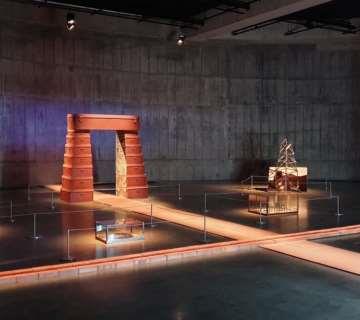
When Does Art Become Protest?
by Umara Zainab
Contemplating the social and political role of art, a recent panel discussion organized by the Raza Foundation provided valuable insights on how art can be a mode of resistance in contemporary India.
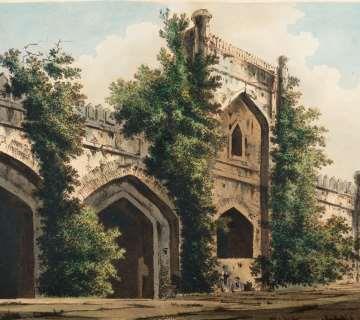
CC Shorts: Reviews from Delhi
by Umara Zainab and Vasudha Chatterjee
Reviews of the exhibitions William Hodges & the Prospect of India and Flowers of Fire along a review of the 89th session of the Art Matters series, organized by the Raza Foundation.

India’s First Art, Architecture and Design Biennale
by Radhika Sharma and Umara Zainab
The inaugural edition of this event, organized by the Ministry of Culture, had seven themed exhibitionswhich attempted to bring together various stakeholders in India’s creative economy.

Interrogating New Trends in Mainstream Stand-Up Comedy in India
by Rujuta Date
Looking at stand-up comedy within a longer history of public humour and entertainment in India.



